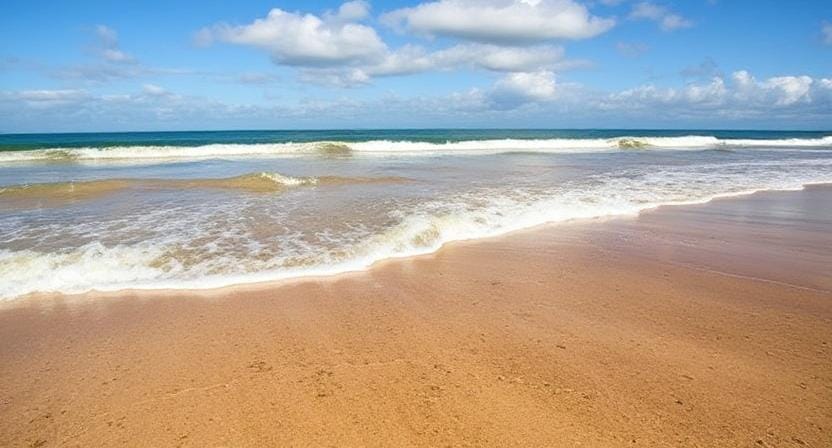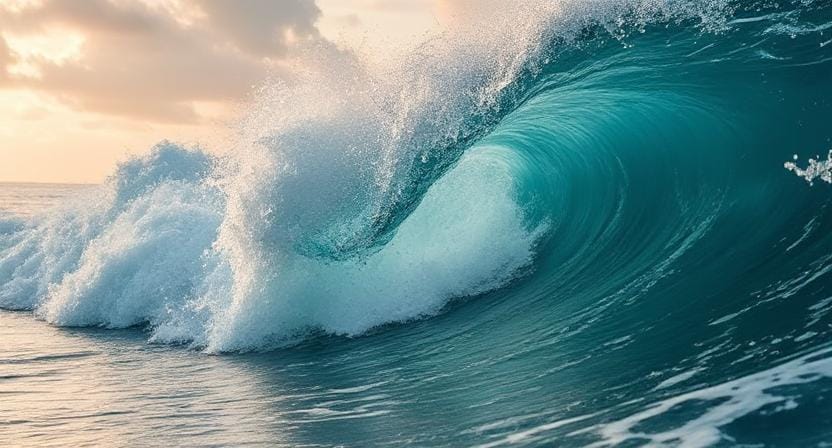Top Takeaways and Key Concepts
- Take climate threats seriously by recognizing rising sea levels are already impacting Pacific Island communities.
- Act urgently because ocean temperatures are increasing three times faster than the global average.
- Protect marine ecosystems by reducing pollution that contributes to coral bleaching and ocean acidification.
- Support vulnerable regions since Pacific Islands face extreme climate risk despite producing only 0.02% of emissions.
- Prepare for climate disasters by building resilience to floods, cyclones, and rising seas affecting coastal populations.
Summary of This Article
This article explains the severe and urgent impact of climate change on Pacific Island nations, where rising sea levels, warming oceans, and increasing acidification threaten homes, food systems, and ecosystems. The World Meteorological Organization reports dramatic sea level rise in the region, while marine heatwaves and acidification devastate coral reefs and fisheries. Despite contributing almost nothing to global emissions, Pacific Islanders face escalating climate disasters like storms, floods, and droughts triggered by events like El Niño. The article emphasizes that climate change is already here and immediate global action is essential to prevent irreversible loss.
Short Video Version of this Article
Picture living in a land where the sun shines practically every day, the ocean is your backyard, and everything is perfect. Doesn’t it sound like a dream? Just like a postcard from your holiday!
Please Note: This post may contain affiliate links. If you click one of them, we may receive a commission at no extra cost to you. As an Amazon Associate, I earn from qualifying purchases.
But hold on to your sunscreen and flip-flops because there’s a small, tiny concern in the background: climate change is coming in quickly and stealing more than its fair share of these Pacific Islands, like the last piece of cake at a celebration.
You know that friend who usually shows up late but still gets the biggest piece? Yes, that’s climate change.
So here’s the deal. The Pacific Islands are in the middle of a perfect storm of climatic chaos, which is like a triple whammy. Imagine this: the ocean is getting hotter faster than a microwave burrito (and we all know how explosive those can get), and the water is becoming as unfriendly as your angry neighbor on garbage day.
It’s not just about having to deal with an extra hot day at the beach; it’s also about whether these islands will even be there long enough for you to enjoy that beach day without having to paddle out to sea to be safe.
The World Meteorological Organization (WMO) has some news that should make anybody with a pulse sit up and take notice.
The latest report from them sounds like something out of a dystopian novel. If you can’t trust the people who keep an eye on the weather, who can you trust? They claim this isn’t just about summers getting a little warmer; it’s about whole islands dangling by a thread—or maybe I should say by a wet hammock tied between two palm trees?
The World Meteorological Organization Report
Let me break it down for you. According to WMO’s latest State of the Climate in the South-West Pacific 2023 report (a title so long it practically needs its own zip code), sea levels in this region have been on an upward trajectory that would make even Disneyland’s Space Mountain feel inadequate.
In certain parts of the western tropical Pacific, we’re talking about sea levels rising by about 10-15 cm since 1993! To put that into perspective: that’s nearly twice what most places are experiencing globally.

It’s like watching your favorite show get renewed for another season while everyone else gets canceled—except instead of plot twists, we’re dealing with actual water!
And just when you thought things couldn’t get worse, let me hit you with another fun fact: central tropical Pacific isn’t far behind either! It seems like Mother Nature decided she wanted an upgrade package on her beachfront property and forgot to inform us mere mortals.
Meanwhile, locals are left wondering if their next family BBQ might end up being more of an aquatic affair than they bargained for.
Now imagine trying to explain this situation at dinner parties: “Hey everyone! How was your weekend? Mine was great until I realized my house might soon be underwater.” Talk about conversation stoppers!
Yet here we are, sipping our piña coladas while watching our homes become prime real estate for fish and other marine life looking for new digs.
So what do we do? Do we throw our hands up in despair or dive headfirst into action? Because let me tell you—sitting back and waiting for someone else to fix it is not going to cut it any more than asking your cat nicely to stop knocking things off shelves will work.
We need solutions faster than you can say “climate crisis,” or else we might find ourselves trading sandy beaches for snorkels and flippers permanently.
Rising Sea Levels

Now, if you’re sitting there thinking, “Okay, so the water’s rising—big deal,” let’s dive into something that might just make you spill your drink: ocean temperatures. Buckle up because this isn’t just your average hot tub situation. The oceans have been warming up three times faster than anywhere else in the world since the ’80s. That’s like cranking your stove to high when you really meant to set it on simmer for a nice risotto. Spoiler alert: nobody wants overcooked noodles or a boiling pot of chaos.
Think about it! Just like that neglected pot of pasta bubbling away until it turns into some weird starch monster, our oceans are getting messy—and I’m not talking about a little spilled soda here.
We’re talking marine heatwaves crashing the party more often than that one friend who never knows when to leave. They show up uninvited, stay way too long, and they definitely don’t bring snacks.
These heatwaves aren’t just a nuisance; they’re wreaking havoc on marine life like an unhinged toddler at a buffet.
Fish are flopping around looking for cooler waters, coral reefs are bleaching out faster than my hair after a summer at the beach (and trust me, that’s saying something), and entire ecosystems are starting to look like they’ve just survived an all-you-can-eat shrimp cocktail night gone wrong.
So why should we care? Well, aside from the fact that no one wants their seafood dinner coming from an oven that feels like it’s been set to “inferno,” these rising temperatures affect everything from weather patterns to food supply chains.
It’s like Mother Nature decided she needed a new recipe and forgot to include half the ingredients while increasing the heat beyond recognition.
In short, ignoring ocean temperatures is kind of like pretending that pesky smoke detector isn’t beeping in the background—eventually, it’ll get loud enough that you can’t ignore it anymore. And believe me, when it comes to climate change and ocean health, those alarms are blaring louder than ever!
So next time someone mentions rising sea levels or warmer waters, don’t roll your eyes; maybe grab some ice water instead—because things are heating up out there!
Problems with Acidification

And if that wasn’t enough to make you want to scream and throw your hands up, let’s talk about acidification. Imagine that the ocean is drinking lemon juice like it just got dumped and is attempting to drown its sadness in a glass of sourness. Honestly, it’s not a pretty sight.
This acidic drink isn’t good for our coral reefs or marine creatures; it’s like letting a cat into a bathtub and hoping it has a good time. Warning: that cat won’t be happy.
Coral reefs, which are like colorful towns full with life under the ocean, are now having an identity crisis because of all the added acidity. They’re basically becoming sad little ghost villages, trying to keep their buildings from falling apart while the water surrounding them starts to seem like it came from a terrible mixology lesson.
You know how you can make your dream house out of sugar cubes and then have someone pour vinegar on it? That’s what’s going on here.
Marine life isn’t exactly happy about this either. Shellfish are in a lot of trouble; their shells are getting thinner than my patience throughout tax season. And what about fish? They’re swimming around in circles, possibly wondering why their favorite places to hang out suddenly feel less like cozy homes and more like hostile places.
So why should we care about these mood swings in the water? Well, besides the fact that no one wants to eat dinner with a side of existential dread (who ordered the sad clam?), this acidification issue affects everything from the availability of seafood to ecosystems around the world.
It’s like seeing your favorite TV program get canceled right before the big finale. You know something huge is going to happen.
In essence, ignoring ocean acidification is like claiming your car has petrol when it doesn’t. Eventually, you’ll be stuck on the side of the road wondering how things went so wrong. So let’s be honest: we need to pay attention before our oceans start to seem like a dystopian future where even fish don’t trust one other!
There Should be a Law Against Climate Change

This report didn’t just come out of nowhere, though. At the Pacific Islands Forum in Tonga, officials were given a doomsday brochure called “Surging Seas in a Warming World.” Sounds good, huh?
Mother Nature sent this study as an SOS to warn us that Pacific Islands are suffering the heat for everyone’s pollution, even though they only make up 0.02% of worldwide emissions. What a shame.
This fact will definitely shock you: most of these islands are merely one to two meters above sea level. That’s about the same height as a basketball hoop. Now, picture the ocean dunking on that. And since 90% of the people live within five kilometers of the shore and half of the infrastructure is almost on the beach, it’s easy to see why people are going crazy.
But don’t just believe me. The report, which was made with support from the UN and other international organizations, goes into great detail about all the things that affect the climate in 2023, such as El Niño, which keeps coming back like an unwanted visitor and causing problems with excessive heat, drought, and cyclones.
There were 34 weather-related disasters in the area in 2023 alone, predominantly storms and floods. These disasters killed more than 200 people and affected more than 25 million people. That’s like a climatic calamity affecting everyone in Australia. Oh no.
Climate change isn’t just a word that people use a lot or something that will happen in the future. It’s here, it’s real, and it’s coming for the Pacific Islands. This utopia might turn into a cautionary tale faster than you can say, “Where did the beach go?” if we don’t do anything quickly. People, time is running out.
Climate change is already causing serious damage across Pacific Island nations through rising seas, extreme weather, and collapsing marine ecosystems. These communities contribute almost nothing to global emissions but face the harshest consequences. Immediate action, stronger climate resilience, and global support are urgently needed to protect lives and coastlines.
Frequently Asked Questions
Why are Pacific Islands at high risk from climate change?
Pacific Islands are mostly low-lying and surrounded by rising seas, making them extremely vulnerable to flooding, land loss, and storm damage.
How fast are sea levels rising in the Pacific region?
Sea levels in parts of the Pacific have risen 10–15 cm since 1993, almost twice the global average.
What impact does ocean warming have on marine life?
Warming oceans trigger marine heatwaves that kill coral reefs, disrupt fish populations, and damage entire ecosystems.
What is ocean acidification and why is it harmful?
Ocean acidification occurs when excess carbon dioxide dissolves into seawater, weakening coral reefs and shellfish and threatening marine food chains.
Why is climate change unfair to Pacific Island nations?
These nations produce just 0.02% of global emissions yet face severe climate disasters caused mainly by industrialized countries.
What kinds of climate disasters affect Pacific communities?
Pacific Islands are hit by floods, cyclones, droughts, and coastal erosion that destroy homes, crops, and infrastructure.
How can the world help protect Pacific Islands?
Support is needed through climate funding, resilient infrastructure, emissions reduction, and protection of vulnerable coastlines and marine ecosystems.

Kevin Collier is a seasoned outdoor enthusiast and writer for Trekbug.com, specializing in outdoor adventures, survival strategies, and prepping insights. With a deep love for nature and a commitment to self-sufficiency, Kevin empowers readers to embrace the wilderness confidently. He shares valuable tips, practical techniques, and inspiring stories, helping both novice and experienced adventurers develop essential skills for surviving and thriving in the great outdoors.





